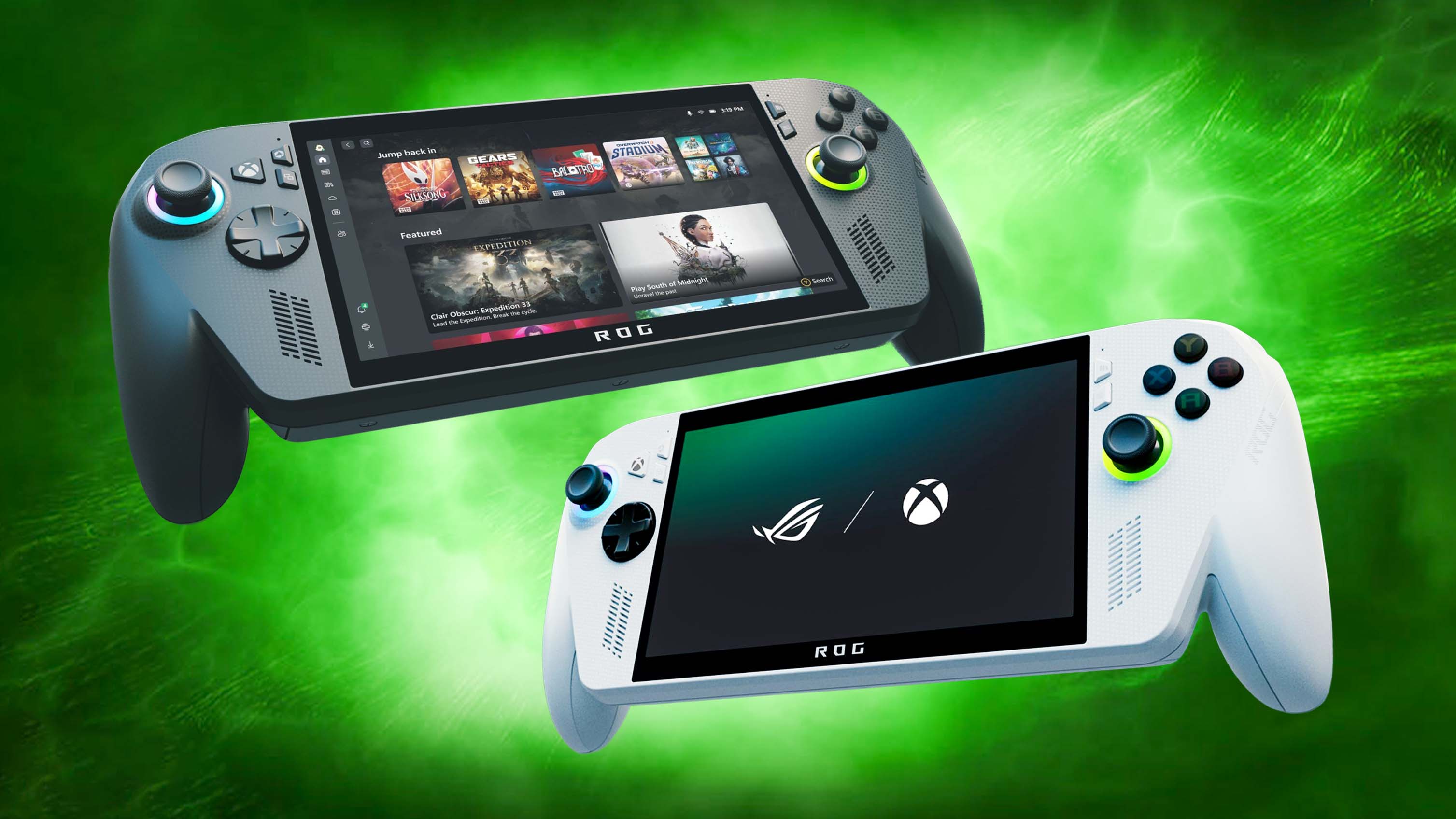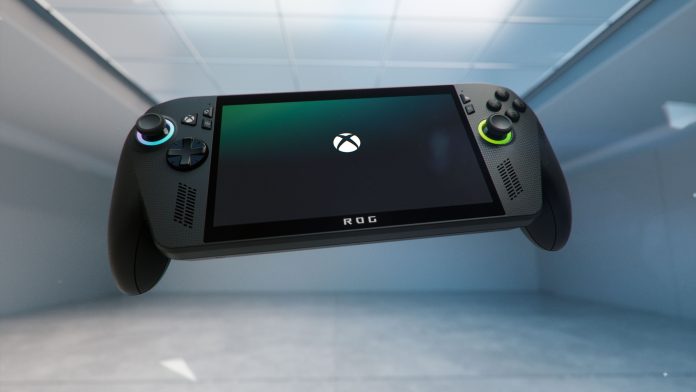
This week, during Gamescom 2025, Xbox and ASUS ROG have finally revealed that the ROG Xbox Ally (Xbox Ally for short) and Xbox Ally X are slated to land on store shelves on October 16, 2025.
Rebecca Spear, Gaming Editor

This week: I’m tuning in to all of the Gamescom news and showcases revolving around Xbox and PC gaming. After work, I’m continuing my replay of Baldur’s Gate 3 on my ROG Ally X while watching my husband play Kingdom Come: Deliverance II on our desktop.
Before this, all we knew was that they would be available by Holiday 2025. The official cost of the handhelds hasn’t officially been revealed yet, but if a price leak last month is accurate, they could sell for a whopping $799 and $999, respectively.
Along with this news, Xbox revealed a new Handheld Compatibility Program for the portable gaming line. If you’re already familiar with Steam Deck verification, then you basically have an understanding of what this is.
That said, it seems Xbox has taken its compatibility system a step further than Valve, to give players a better understanding of how well a game will actually play on Xbox Ally or Xbox Ally X.
Best of all, if implemented well, this could prevent a frustrating situation that many Steam Deck owners have dealt with.
What is Xbox’s Handheld Compatibility Program?
This is a system that Xbox has created to indicate when a game has been optimized for handhelds. A game can either be marked with “Handheld Optimized” or “Mostly Compatible.”
In a press release, Xbox clarifies what these badges mean:
- Handheld Optimized: This indicates games that are ready to go—with default controller inputs, an intuitive text input method, accurate iconography, clear text legibility, and appropriate resolution in full-screen mode—so you can spend less time adjusting settings, and more time defeating that next big boss.
- Mostly Compatible: This indicates games that may require minor in-game setting changes for an optimal experience on handheld.
Based on this information, it seems likely that games without one of these badges are not handheld optimized. But that doesn’t necessarily mean that they won’t run well on the Xbox Ally or Xbox Ally X.
Now, combine that with Windows Performance Fit indicators
In addition to these compatibility badges, Xbox will also provide a new Windows Performance Fit indicator, which will give a general idea of how well a game is expected to perform on the Xbox Ally or more powerful Xbox Ally X.
As Xbox explained in the press release, “When a game is both ‘Handheld Optimized’ and carries a Windows Performance Fit ‘Should play great’ or ‘Should play well’ badge, it signals compatibility and performance fit—giving you added assurance before you play.”‘
Xbox is specifically “working with game studios to test, optimize, and verify thousands of games for handheld compatibility” to make this possible.
You might still need to make slight settings adjustments when playing games marked as “Handheld Optimized,” but they should at least run well on Xbox Ally devices.
This two-part system potentially solves a problem that Steam Deck verification still has

If you or someone you know owns a Steam Deck, then you’re likely already familiar with Steam Deck verification, which is relatively similar to Xbox’s new Handheld Compatibility Program.
This system basically tells you whether or not a game has been optimized to work on the Steam Deck. In case you don’t know, Valve provides four indicators:
- Verified: The game passes Valve’s compatibility checks.
- Playable: The game can function on Steam Deck, but might have certain issues, like having small text that’s hard to read on a handheld.
- Unsupported: The game isn’t compatible with Steam Deck, potentially due to hardware limitations or maybe even with Proton, the Steam Deck’s compatibility layer that translates Windows API’s (Application Programming Interfaces) to the Linux-based SteamOS.
- Unknown: The game hasn’t been tested, so Steam Deck compatibility is unknown. In other words, the game might play, or it might not.
The problem is, Valve’s system only tells you half of the information you need to make an informed game purchase for the Steam Deck. As my colleague, Richard Devine, has previously written about, Steam Deck Verification is useful, but it doesn’t tell you if a verified game runs badly on Steam Deck.
For instance, I can’t tell you how many times I’ve bought a game marked as Steam Deck Verified, only to discover that it played so choppy on my Steam Deck, or froze often enough that it wasn’t worth actually playing.
Reddit pages and Steam Deck forums are full of people pointing out this same issue.
Meanwhile, Xbox seems to be getting ahead of this problem by providing its own compatibility system as well as a Windows performance indicator. That way, you might not find yourself in the frustrating experience of purchasing a “handheld optimized” game only to find that it runs horribly on the Xbox Ally.
Remember, while the Xbox Ally and Xbox Ally X specs are looking relatively impressive for handhelds, portable gaming devices like these aren’t nearly as powerful as a gaming laptop or desktop, so some concessions are made in exchange for portability.
Of course, the usefulness of this dual-part system depends on how well Xbox’s Handheld Compatibility Program and Windows Performance Fit work together. But assuming it is made well, this could make the new handhelds far more convenient to use.
If nothing else, I hope Valve learns from this idea and implements something similar.
I’m honestly stoked for the Xbox Ally X

As Windows Central’s resident handheld gaming PC enthusiast, I’m planning on getting my hands on the Xbox Ally and Xbox Ally X handhelds as soon as possible for testing and a review. I’ll be sure to test this dual-part compatibility system in the process (if it has released by then).
At this point, I’ve owned or at least tested every major gaming handheld and then some, including the Steam Deck, ROG Ally, ROG Ally X, Legion Go, Legion Go S (SteamOS and Windows), MSI Claw 8 AI+, various AYANEO devices, and more.
RELATED: Best handheld gaming PCs
Based on that experience, I’m especially excited to check out the gaming performance of the higher-tier Xbox Ally X. With its new Windows optimization, handheld compatibility system, and performance indicators, it could provide one of the most convenient handheld experiences to date.
In case you didn’t already know, the upcoming Xbox Ally line is supposed to offer better system performance than previous Windows handhelds because its full-screen mode is designed to cut down background programs, saving battery life and improving performance in the process.
Add a brand new AMD Ryzen Z2 AI Extreme APU to the mix, and it’s possible that performance could be far better than what we’ve seen on the ASUS ROG Ally.
One way or the other, I’m excited to find out how it compares to previous devices I’ve tested.
